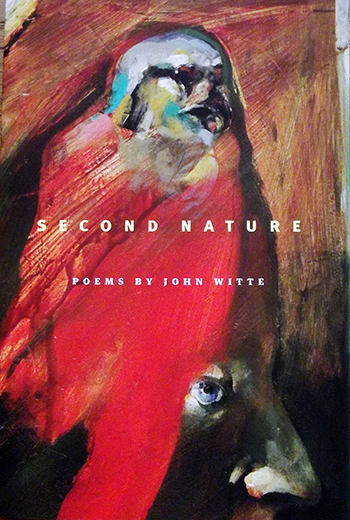JANIS JOPLIN
TRUCK
APPARITION
HOME
“John Witte’s Second Nature explores the human ability to find contentment in a pained world. The book, organized in five sections roughly corresponding to the arc of a life, is calm, wise, cheered – yet not naïve. In “Grace,” from the book’s moving second section, about fatherhood, Witte describes his toddler crawling on a newspaper: “she kisses / the baby bundled in rags the father grieving.” The irony is not lost on the poet, for whom “grace” is the sense of reprieve: he, thankfully, is not the “father grieving.” The third section is comprised of portraits, semi-mythical personages who manage the extraordinary despite personal setback, like Johnny Appleseed, who is “barefoot ridiculous unhinged.” In their strangely visionary lives, these figures, too, discover a humble grace. The focus remains not on the success or failure of the vision, but on our ability to find contentment within it. Like the astronaut of “Home,” we return to gravity – but not, Witte insists, simply to darkness: “The earth / has darkness and then light.”
Much of Second Nature is written in minimally punctuated, heavily enjambed three-line stanzas, in which each successive line lengthens. The form demands that we follow syntax closely, keeping us awake to language. It also allows Witte great freedom to switch topic and location. Juxtapositions go unannounced; phrases and images simply run together. Witte counts on us to experience the friction.” —Benjamin S. Grossberg, The Antioch Review
“John Witte’s third collection of poems, Second Nature, is rich, ample, wide-ranging, mature work, showing this probing, watchful poet at peak strength. Carefully wrought, evocative, Witte’s mysterious work is notable for its simultaneous depth of feeling and depth of thought. Both lyric and meditative, Witte is a poet wide-open to the world, making art out of the place where memory and immediate sensation come together, the trigger-point of consciousness, as when he sees a plum tree’s white petals loosening in wind and suddenly remembers himself as a boy cleaning a fish, the “sparkly scales leaping behind the knife.” This is a place where readers are most likely to see themselves as well, making Witte’s poetry at once highly personal and powerfully accessible.
The poems in Second Nature are filled with images of soaring, floating, swirling, tumbling. Whether a leaf, a cap tossed in the air, a current of wind, a Ferris wheel, a bird, a cry, a flight, there is a powerful sense of breath at work: the breath of earth made visible in wind, the poet’s held or spoken breath. There is an intimacy the reader feels with the poet, and an intimacy the poet finds in the things of the world, that is achieved by the sound, rhythm, flow, and vividness of the poems.
Clear-headed, alert to the dangers of love and loss, Witte is a poet who manages to find sorrow and transcendence to be equally vital responses. Like birds singing their “desperate psalm” in a clearcut, Witte’s poems bring us a rare kind of hope out of the devastation he sees all around him.” —Floyd Skloot
